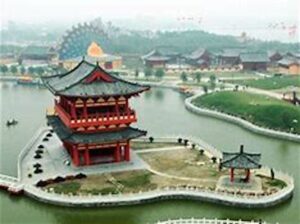
Kaifeng, China, 1147, offering sumptuous banquets. from the varied and delicious cuisines of China’s different regions. Hundreds of small inns, teahouses, boodle shops, and dumpling houses also thrive night and day in this bustling cosmopolitan center. The bureaucrat and roving critic Meng Yuanlao reports that service standards are high in the best restaurants, with even the slightest slip in etiquette reported back to the restauranteur, who is obligated to dock the waiter’s salary- or even dismiss him for more severe breaches of etiquette. in his journals. the critic comments on all aspects of the Kaifeng restaurant scene.
For southern Chinese specialties, Meng Yuanlao recommends a walk down Small Sweetwater Alley, while the famed night market is the place for a plate of tripe with blood pasta or chicken tongue soup.
An upcoming new trend is also monkey brains,
some restaurants are offering this specialty for special guests.
Merchants and visiting officials have driven the gastronomy boom in Kaifeng in their eagerness to sample dishes perfected in earlier dynasties and in other regions. The Song Dynasty has its own sought-after delicacies, including fried purple crisp pork, sea cucumber shaped like lotus flowers, peony and swallow vegetables, hand-stretched noodles, and goose pears. Vegetables, herbs, and spices such as eggplant and spinach, nutmeg, and saffron brought in by traders on the Silk Road bring new flavors and textures to many of the dishes.
Great attention is paid to cooking methods and the beautiful presentation of each dish.
As much as the restaurants flourish in Kaifeng’s bustling streets. Government officials have been known to sit for hours discussing the different brands of tea; the idle rich and those of an artistic temperament will pay a fortune for a perfectly glazed blue and white teacup.
 .
.






